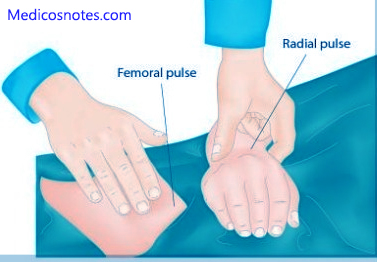


Postnatal development of obstruction in coarctation of the aorta: role of the ductus arteriosus. Hemodynamic considerations in the development of narrowing of the aorta. Should balloon angioplasty be used instead of surgery for native aortic coarctation?. Collateral vessels that connect arteries from the upper part of the body to the vessels below the level of coarctation may be seen these may be present as early as a few weeks to a few months of life. The transverse aortic arch (the arch between the origin of the right innominate artery and the left subclavian artery) is also hypoplastic in symptomatic neonates and infants. Varying degrees of hypoplasia of the isthmus of the aorta (the portion of the aorta between the origin of the left subclavian artery and ductus arteriosus) are present in most patients with thoracic coarctation this hypoplasia may be significant in symptomatic coarctation of the neonate and infant in children and adults, the isthmus may have only mild narrowing. A jet lesion on the wall of the aorta distal to the coarctation site may also be present. In such instances, the coarcted segment may be long and fusiform with irregular lumen many consider these to be inflammatory or autoimmune in origin, and they may be variants of Takayasu arteritis.ĭilatation of the descending aorta immediately distal to the coarctation segment (poststenotic dilatation) is usually present. However, rarely, a coarcted segment is present in the lower thoracic or abdominal aorta. The classic coarctation of the aorta is located in the thoracic aorta distal to the origin of the left subclavian artery at about the level of the ductal structure. The coarctation may be discrete, or a long segment of the aorta may be narrowed the former is more common. The localized constriction may form a shelflike structure with an eccentric opening or may be a membranous curtainlike structure with a central or eccentric opening. Pathologic anatomyĬoarctation of the aorta may be defined as a constricted aortic segment that comprises localized medial thickening, with some infolding of the medial and superimposed neointimal tissue. This article discusses the pathology, pathophysiology, clinical features, noninvasive and invasive evaluation, and therapy in patients with coarctation of the aorta. The diagnosis of coarctation of the aorta may be missed unless an index of suspicion is maintained, and diagnosis is often delayed until the patient develops congestive heart failure (CHF), which is common in infants, or hypertension, which is common in older children. Coarctation of the aorta may occur as an isolated defect or in association with various other lesions, most commonly bicuspid aortic valve and ventricular septal defect (VSD). Coarctation of the aorta (CoA) is a relatively common defect that accounts for 5-8% of all congenital heart defects.


 0 kommentar(er)
0 kommentar(er)
